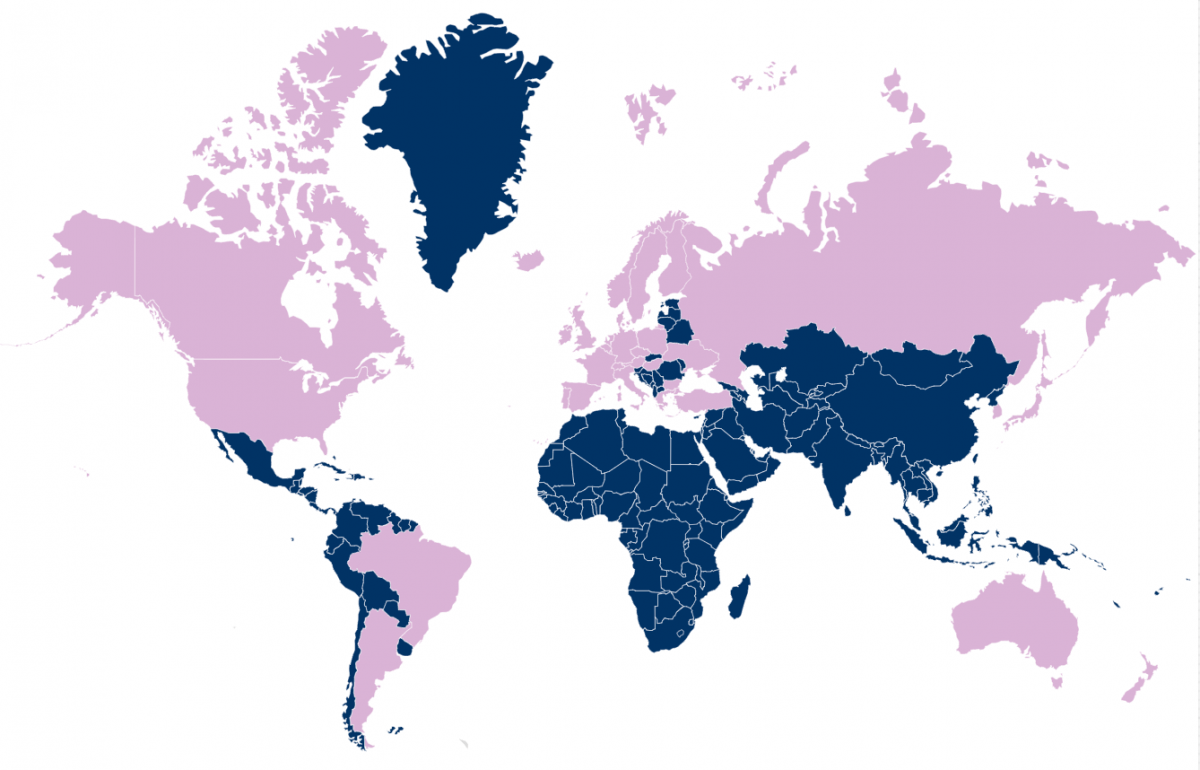 The Missile Technology Control Regime (MTCR) is a voluntary export control regime that was established in 1987 after emerging concerns about the proliferation of missiles capable of delivering nuclear warheads. The United States spearheaded the effort after imposing domestic controls over some materials and technologies relevant to missile development in 1982. The initial membership included the G-7 (Canada, France, Germany, Italy, Japan, the United Kingdom and the United States), but has since grown to 35 member states.
The Missile Technology Control Regime (MTCR) is a voluntary export control regime that was established in 1987 after emerging concerns about the proliferation of missiles capable of delivering nuclear warheads. The United States spearheaded the effort after imposing domestic controls over some materials and technologies relevant to missile development in 1982. The initial membership included the G-7 (Canada, France, Germany, Italy, Japan, the United Kingdom and the United States), but has since grown to 35 member states.
In 1993 the regime was expanded to include missile systems capable of delivering chemical and biological weapons. The regime generally defines WMD-capable missiles as capable for carrying a 500-kilogram payload over 300 kilometers.

The MTCR member states commit to establishing national export control policies for certain materials and technologies relevant to the development of ballistic missiles, cruise missiles, unmanned aerial vehicles, drones, remotely piloted vehicles, and sounding rockets. The materials and technologies are listed in the MTCR annexes and items can be added to or subtracted from the lists based on consensus decisions. The annex is divided into two groups, Category I and Category II. Category I includes complete missiles and rockets, major sub-systems, and production facilities. Specialized materials, technologies, propellants, and sub-components for missiles and rockets comprise Category II.
Potential exports of Category I and II items are to be evaluated on a case-by-case basis. Under the regime guidelines, “there will be a strong presumption to deny” Category I transfers. MTCR restrictions for Category II exports are less severe, largely because many items in the category have dual uses, and the MTCR is not intended to hamper efforts like space exploration programs that share similar technologies to ballistic missiles.
The MTCR identifies five factors that members should take into account when evaluating a possible export of controlled items: whether the intended recipient is pursuing or has ambitions for acquiring weapons of mass destruction; the purposes and capabilities of the intended recipient’s missile and space programs; the potential contribution the proposed transfer could make to the intended recipient’s development of delivery systems for weapons of mass destruction; the credibility of the intended recipient’s stated purpose for the purchase; and whether the potential transfer conflicts with any multilateral treaty. Catch-all provisions were added in 2003.v Member states are expected to provide notifications to other MTCR members when an export is denied. There is also a no undercut provision is designed to prevent member states from fulfilling an export if that request has been denied by another member state.
States can apply to join the MTCR, and membership is granted on the basis of consensus. Membership expanded dramatically through 1998. Since at time, only three states have been admitted for membership. Several additional states, including China, have committed to adhere to MTCR guidelines, although they are not full members.
The MTCR is credited with hindering the ballistic missile programs in a number of states, including Argentina, Brazil, Egypt, Iraq, Libya, South Africa, South Korea, and Syria.
RECOMMENDATIONS
- Update Technological Parameters: The MTCR has proven successful at stemming the spread of ballistic missiles in several states, but less successful against the development of cruise missiles and unarmed-aerial vehicles. Continuing to adapt the Annex I and Annex II lists on a regular basis to take into account technologies relevant to these systems, despite the crossover with manned delivery systems, and new technologies could help control the continued spread of such systems.
- Consider Dropping Consensus Requirements for Procedural Votes: The consensus requirement for decision making, even on procedural votes, can allow one state to hold up decisions such as expanding membership in the MTCR or updating control lists for political reasons. A majority, or vote by two thirds of the members, could be adopted to make decisions in certain areas.
- Expanded Membership: Key states remain outside of the MTCR regime for a variety of reasons. Possible countries to target could include Pakistan and China (a voluntary adherent to MTCR guidelines since 2004), given that both possess active ballistic missile and cruise missile development programs. A criteria-based approach for membership could make for a more equitable membership process and prevent blocking applications for unrelated political reasons. While increasing membership could make consensus more difficult to achieve, a simultaneous move away from consensus-based decision making on some areas, could neutralize that potential negative implication. Additionally, expanded membership can help universalize the norm against transfers of ballistic missile technologies.
- Encourage Timely Reporting on Export Denials: According to the U.S. Government Accountability Office, 65 percent of MTCR members were not fulfilling their obligations for timely reporting export control denials. While this GAO study was conducted in 2002, slow or nonexistent reporting continues. Failure to provide timely information to MTCR partners could hinder attempts to identify patterns of attempts to circumvent export controls. Notifications could be expanded to approvals as well. Sharing information about approvals would allow states to better identify patterns of proliferation concern.
- Coordination with NSG and PSI: Coordination and information sharing on approvals and denials between the MTCR and NSG could provide more information about illicit trafficking networks and coordinated efforts to circumvent export controls. If illicit trafficking networks and patterns can be sketched out, utilizing information sharing through PSI to provide trainings for targeting and identifying particular types of transactions or geographic areas of trafficking concern could provide a more efficient allocation of resources.
- Review of National Policies and Authorities: Given the voluntary nature of the MTCR guidelines, states implement obligations to varying degrees. Encouraging all participating states to review of national controls and notification policies could help target areas of poor implementation or noncompliance, or indicate where member states need to update their export control lists.
